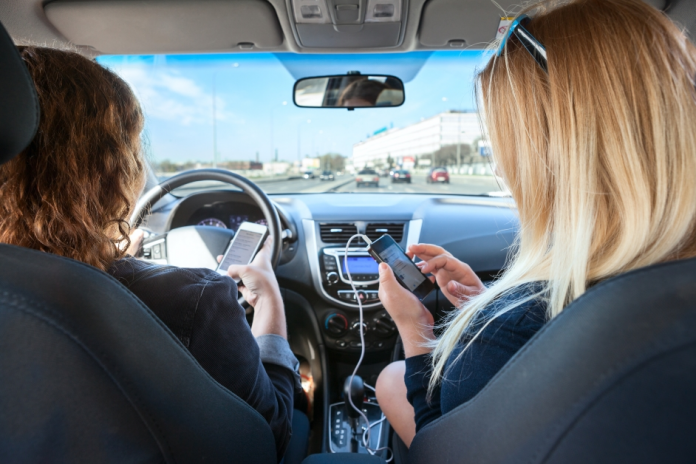WASHINGTON, D.C. – According to the American Automobile Association (AAA), the U.S. has entered the “100 deadliest days” for teen drivers, the period from Memorial Day to Labor Day during which an average of over seven people per day will die in teen driving-related automobile crashes.
A news release by AAA Public Relations Manager Andrew Gross earlier this week said, “According to previous research from the AAA Foundation for Traffic Safety, new teen drivers ages 16-17 are three times as likely as adults to be involved in a deadly crash.”
“There are more daily deaths in crashes involving teen drivers during the summer months than the rest of the year because teens tend to have more unstructured time behind the wheel,” said Jake Nelson, AAA’s director of traffic safety advocacy and research. “So what can be done? We can encourage teens to double down on staying focused when driving, buckling up for every ride and driving within posted speed limits.”
The AAA release recommended that “parents model safe driving behaviors and help ensure their teens practice them too.”
The report pointed out three factors that commonly result in deadly crashes for teen drivers:
Distraction
Distraction plays a role in nearly six out of 10 teen crashes, four times as many as official estimates based on police reports. The top distractions for teens include talking to other passengers in the vehicle and interacting with a smartphone.
Not Buckling Up
In research published in 2015, 60 percent of teen drivers killed in a crash were not wearing a safety belt. Teens who buckle up significantly reduce their risk of dying or being seriously injured in a crash. According to the National Highway Traffic Safety Administration, of the 22,215 passenger vehicle occupants killed in 2019, 47% were not wearing seat belts.
Speeding
Speeding is a factor in nearly 30 percent of fatal crashes involving teen drivers. A previous AAA survey of driving instructors found that speeding is one of the top three mistakes teens make when learning to drive.
Avoid distractions: turn off electronic devices, including hands-free
In a previous article, Cullman Police Department (CPD) Traffic Homicide Sgt. Joey Duncan pointed out that most wrecks in Cullman involve one driver following too closely behind another, but distractions usually contribute to a large number of those incidents. To him, the issue was not so much drivers following too close by habit, but instead, ending up too close when they did not notice what was happening on the road right in front of them.
Said Duncan, “I don’t think it’s necessarily a tailgating issue we’re having problems with. I think it’s just the distraction; it’s so easy for people to be distracted by something these days, whether it’s paying attention to the restaurant that’s on the left side, you know, and they’re not focused on driving, they’re looking out the left side at what’s going on. People are just not watching the road when they drive, and that’s why we’re having so much-such a high number-of following too close. I really believe it.”
The CPD’s observations of drivers lack of attention to what they are doing or to what is happening around them echo growing concerns about distracted driving across the nation, with electronic devices being cited as one of the biggest culprits. Almost everyone has seen ads, commercials or online videos about the dangers of driving while texting, reading or even talking on a hand-held cell phone. However, the National Safety Council (NSC) has published studies indicating that even the new generation of hands-free technology does not help nearly as much as people think.
In its 2012 publication “Understanding the Distracted Brain,” the NSC stated:
Multitasking is valued in today’s culture, and our drive for increased productivity makes it tempting to use cell phones while behind the wheel. People often think they are effectively accomplishing two tasks at the same time. And yes, they may complete a phone conversation while they drive and arrive at their destination without incident, thus accomplishing two tasks during the same time frame. However, there are two truths to this common belief.
- People actually did not “multitask.”
- People did not accomplish both tasks with optimal focus and effectiveness.
Multitasking is a myth. Human brains do not perform two tasks at the same time. Instead, the brain handles tasks sequentially, switching between one task and another. Brains can juggle tasks very rapidly, which leads us to erroneously believe we are doing two tasks at the same time. In reality, the brain is switching attention between tasks – performing only one task at a time.
The study focused on cell phone use, which the NSC considers to be among the biggest safety issues for drivers, including those who use hands-free technology. The report continued:
Vision is the most important sense for safe driving. Yet, drivers using hands-free phones (and those using handheld phones) have a tendency to “look at” but not “see” objects. Estimates indicate that drivers using cell phones look, but fail to see, up to 50 percent of the information in their driving environment. Distracted drivers experience what researchers call inattention blindness, similar to that of tunnel vision. Drivers are looking out the windshield, but they do not process everything in the roadway environment that they must know to effectively monitor their surroundings, seek and identify potential hazards and respond to unexpected situations.
Today there are more than 320 million wireless connections in the U.S, and although public sentiment appears to be turning against cell phone use while driving, many admit they regularly talk or text while driving. The National Highway Traffic Safety Administration estimates that nine percent of all drivers at any given time are using cell phones, and the National Safety Council estimates about one in four motor vehicle crashes involve cell phone use at the time of the crash.
Cell phone distracted driving has become a serious public health threat. A few states have passed legislation making it illegal to use a handheld cell phone while driving. These laws give the false impression that using a hands-free phone is safe.
The NSC’s study indicated that drivers carrying on cell phone conversations, even hands-free, tended to suffer:
- Inattentional blindness – not seeing things right in front of them, and especially to the sides. Eye movement studies showed that drivers talking on hands-free phones tended to focus their eyes on a much smaller field right in front of their vehicles while not keeping an active watch on other areas within their field of vision. Areas outside the talking drivers’ narrow focus include common locations of stop signs, traffic lights, oncoming side road traffic at intersections and points from which pedestrians are likely to step out into the street.
- Slower response time and reaction time – In one driving simulator study, participants actively engaged in cell phone conversations had slower reaction and response times than participants with a .08 blood alcohol concentration, legally drunk in Alabama.
- Problems staying in their lanes
The NSC study concluded that a person talking on a cell phone while driving is four times more likely to be involved in a crash than a person not using a phone, whether the device is hand-held or hands-free.
For parents
AAA shared these pointers for parents of new teen drivers.
When helping your new driver learn the ropes, do:
- Share your driving wisdom and experience!
- Stay cool when your teen says, “Don’t yell at me!”
- Drive in different conditions (weather, lighting, road type)
- Aim for smoothness—pretend there’s a cup of water on the dash and you don’t want to spill a drop.
- Take breaks—every 25 minutes or so and discuss progress.
To be most helpful with your teen behind the wheel, don’t:
- Don’t take the same route twice; use a slightly different route each time.
- Don’t view your teen as your chauffeur—they need your eyes, attention and coaching.
- Don’t focus too much on basic maneuvers (turning, etc.)—your teen will pick those up quickly.
- Don’t say too much, but offer immediate feedback when appropriate; debrief fully after the session.
AAA safety tips
- Drive the way you want your teen to drive—be a good role model.
- Let them sleep! Biologically, teens need about 9.5 hours of sleep daily.
- Adopt a Parent-Teen Driving Agreement
- When you are coaching your teen, say aloud the actual and potential (hidden) hazards along the road.
- Visit AAA’s Keys2Drive website at https://exchange.aaa.com/safety/teen-driver-safety/.
The AAA teen driver safety website listed above has a variety of tools to help prepare parents and teens for the dangerous summer driving season. Teens preparing for the responsibility of driving should enroll in a driver education program that teaches how to avoid driver distraction and other safety skills.
Copyright 2021 Humble Roots, LLC. All Rights Reserved.






























